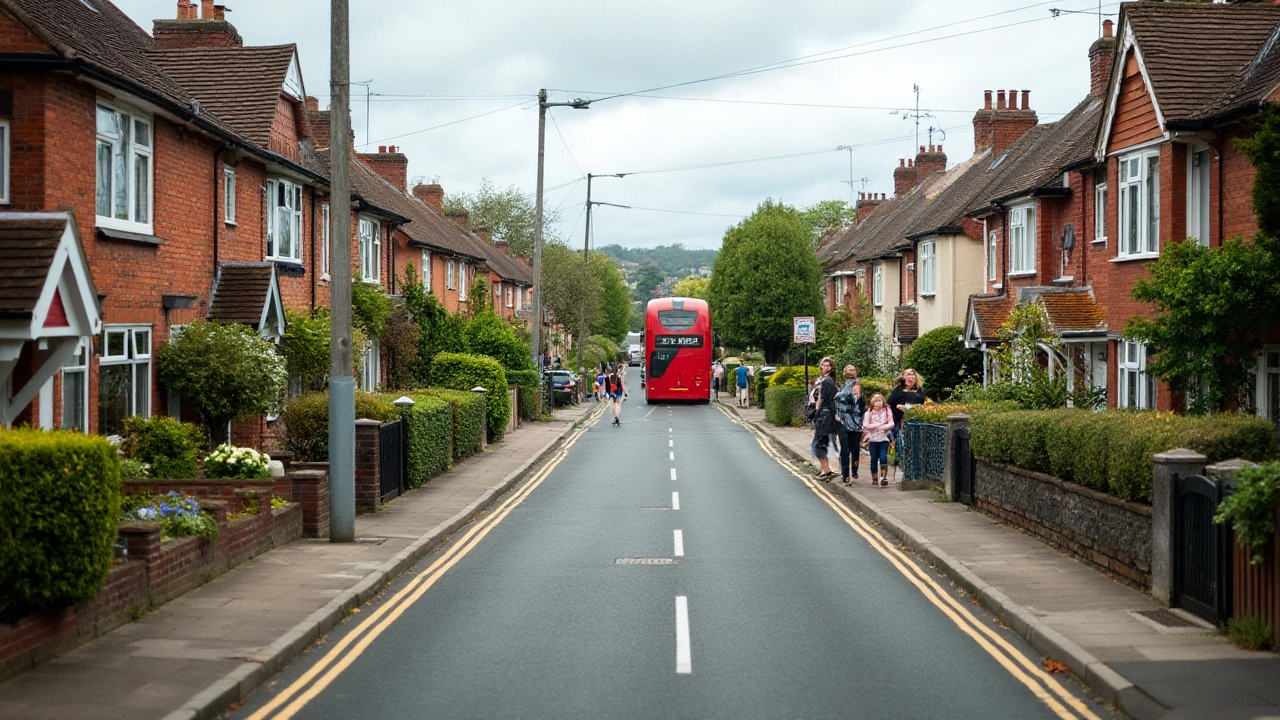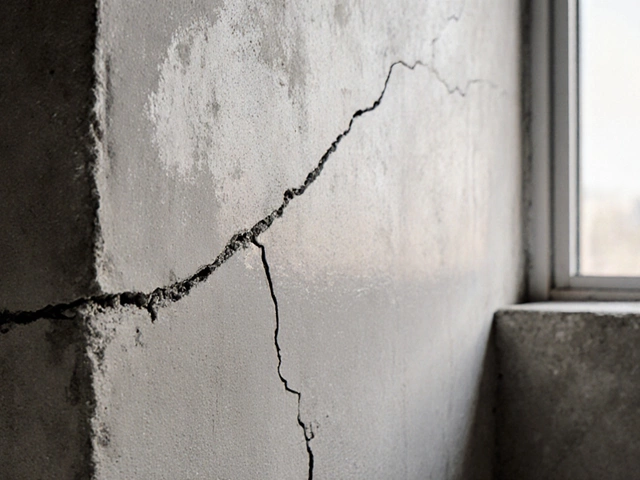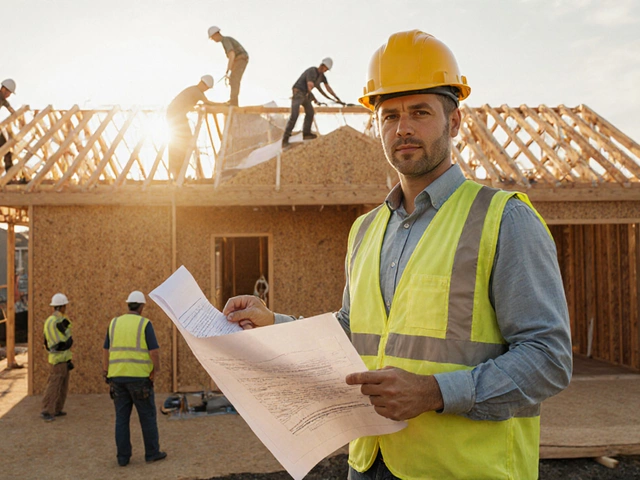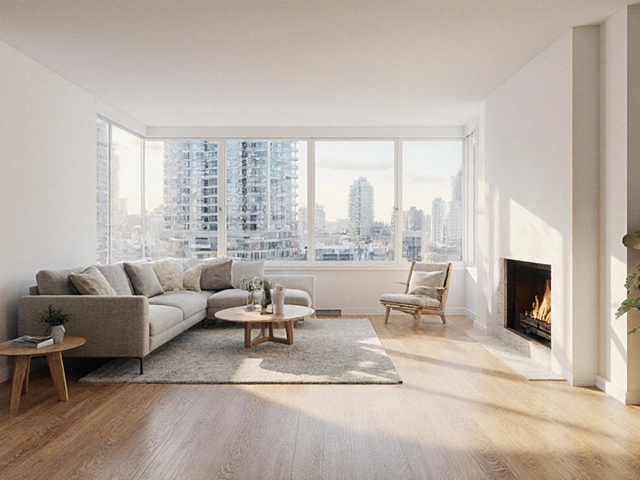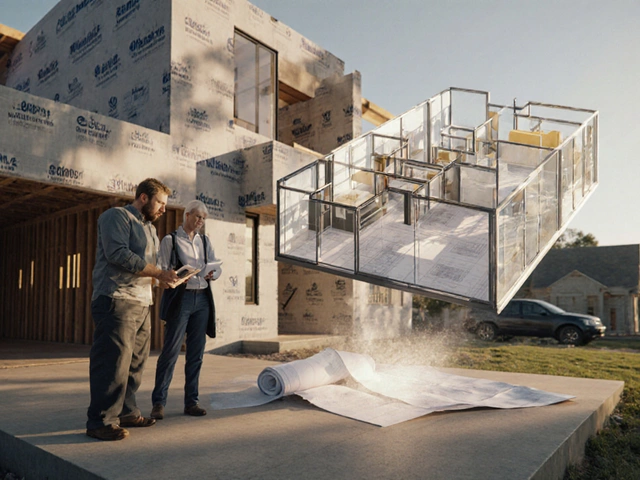When we hear about construction, the towering skyscrapers and bustling commercial centers often come to mind. However, on the flip side of this industry lies a quieter, yet equally significant sector: non-commercial construction. This realm is devoted to creating structures that serve personal, residential, or communal purposes, rather than business-driven goals.
Non-commercial construction encompasses a range of projects from cozy family homes to expansive public libraries. These projects often emphasize factors like design aesthetics, environmental harmony, and quality of life improvements. By understanding the nuances of non-commercial construction, we unveil a world focused on building spaces that enhance day-to-day living and nurture communities.
- Defining Non-Commercial Construction
- Exploring Types of Non-Commercial Projects
- Comparing Commercial and Non-Commercial Construction
- Challenges Faced in Non-Commercial Construction
- Innovative Trends in Non-Commercial Architecture
- The Impact of Non-Commercial Construction on Communities
Defining Non-Commercial Construction
Non-commercial construction, unlike its commercial counterpart, focuses primarily on building projects that serve personal or community-focused purposes rather than profit-driven enterprises. This type of construction includes a variety of projects such as single-family homes, educational institutions like schools and universities, and public facilities such as libraries, parks, and community centers. These buildings are primarily designed to provide spaces for living, learning, and social interaction, prioritizing human-centric values over purely financial returns. The goals here lean towards sustainability, comfort, and aesthetic appeal, often taking into account environmental factors and the well-being of the occupants.
The differentiation between non-commercial and commercial construction can be a bit murky without a solid understanding of their core purposes. In the realm of non-commercial construction, the focus isn't on customer foot traffic or revenue generation but rather on creating harmonious environments which can nurture, educate, and provide refuge. Commonly, these projects are funded by public funds, private individuals, or non-profit organizations rather than investors looking for a hefty return on investment. This orientation shapes not just the aesthetic of such projects but also their scale, scope, and the speed at which they are developed.
One significant aspect of non-commercial construction is how it adapts to the evolving needs of society. As our world faces challenges such as climate change and urbanization, non-commercial projects are increasingly prioritizing green building practices like the use of renewable materials, energy-efficient designs, and waste minimization. According to a recent report, nearly 40% of new residential and public buildings in developed nations now incorporate some form of sustainable architecture—a figure expected to double by 2030.
"The role of non-commercial construction is to forge the backbone of society," notes urban planner Jane Jacobs, highlighting the intrinsic importance of this type of building work in creating livable communities.
Beyond individual homes or community structures, non-commercial construction plays a vital role in generations of infrastructure aimed at enriching societal welfare. These projects often become pillars of communities; think of local recreation centers that host countless activities or public libraries that become the heart of neighborhood learning. This sector's impact is profound, often informing urban planning decisions and even the socio-economic development of entire regions. In recent years, there has been a push towards integrative designs that meld functionality with aesthetic sensibilities, ensuring these spaces can meet multiple community needs efficiently while also retaining a sense of individuality and character unique to each project.
In practice, non-commercial construction requires a unique blend of art and science, as architects and builders must remain acutely aware of the cultural and emotional context their structures will inhabit. This requires utilizing a more holistic approach to design, one that considers the prospective lifetime use of a space and its ability to adapt to future changes. These projects, often spearheaded by reputable architects and builders with a passion for community-driven work, can stand as testaments to what thoughtful, people-centered design can achieve when not bound by the strict confines of commercial profitability.
Exploring Types of Non-Commercial Projects
Delving into the world of non-commercial construction opens up a rich tapestry of projects geared towards fulfilling essential human needs rather than catering to corporate or commercial ambitions. This sector includes structures designed for living, learning, and community enrichment, with each type bringing its own unique set of characteristics and challenges. Among the most prevalent types of non-commercial projects are residential buildings, which range from single-family homes to sprawling apartment complexes. These projects often highlight comfort and personal space, translating architectural creativity into havens that cater to intimate lifestyle preferences. Residential construction involves meticulous planning to accommodate the diverse desires of homeowners or tenants, with an unwavering focus on safety and sustainability.
Another key area is educational facilities, encompassing everything from elementary schools to universities. These projects are critical in providing environments conducive to learning and development. Educational buildings are typically designed with accessibility and adaptability in mind, allowing the spaces to evolve with pedagogical advancements. Architects and constructors often prioritize ergonomic design and energy efficiency, recognizing the long-term impact on students and educators alike. As Antoine Predock, a renowned architect, stated:
"Buildings for education are not just containers for delivering instruction; they are learning tools themselves."
Community-centric constructions, such as libraries, recreational centers, and religious institutions, also play a pivotal role in non-commercial building projects. Such structures are instrumental in fostering communal bonds and providing a common ground for various activities. In this realm, versatility is key, as these spaces must adapt to a multitude of uses while maintaining user-friendly interfaces. These projects often spark collaborative efforts between governments, private entities, and communities to ensure they become a cherished component of social infrastructure. Notably, the push towards green and sustainable building practices is increasingly shaping non-commercial projects, with many communities aiming to reduce their carbon footprint and elevate environmental consciousness.
Moreover, healthcare facilities, including clinics and hospitals, fall under non-commercial construction. Here, the focus is on crafting environments that enhance healing, feature cutting-edge technology, and offer comfort to patients and healthcare providers. The design of these facilities often demands rigorous adherence to regulations and standards to ensure the well-being and safety of all occupants. It's remarkable how these building types, though often overlooked, underscore the profound impact non-commercial projects can have on everyday life. Understanding these various types of non-commercial projects not only highlights their complexity but also underscores their significance in enhancing our day-to-day living experiences.
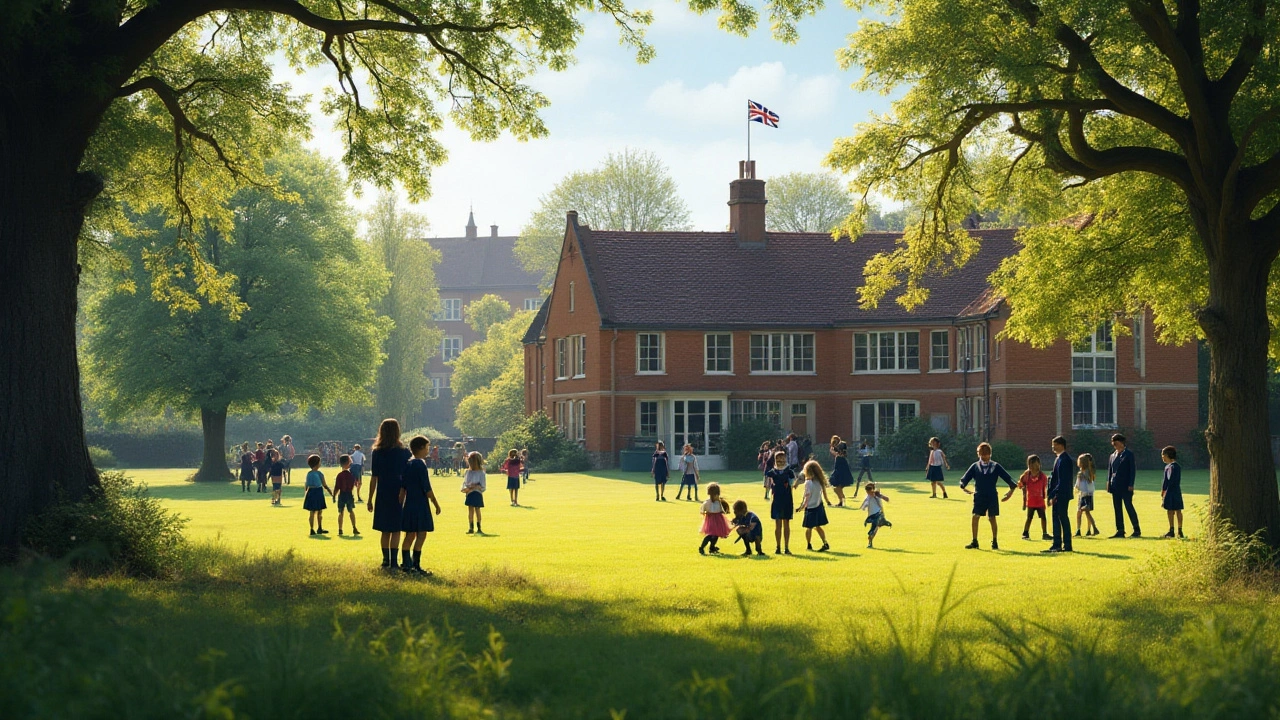
Comparing Commercial and Non-Commercial Construction
When examining the world of construction, it’s essential to delineate between commercial and non-commercial construction. Each serves a distinct purpose, caters to different needs, and operates under unique regulations and financial structures. The most evident distinction lies in the primary objective: commercial construction projects are profit-driven, focusing on building spaces that directly or indirectly generate income. Think of office buildings, retail centers, and hotels. Each brick laid in commercial projects serves not just utility but also investment potential. On the other hand, non-commercial construction prioritizes human and community needs, where financial gains are often secondary considerations. It includes the creation of residences, schools, and public institutions.
Another critical difference revolves around design and functionality. Commercial spaces are typically characterized by bold, large-scale designs meant to attract business and customers. These buildings often adhere to sleek, modern architectural trends that aim to optimize space for economic activities. In contrast, non-commercial projects emphasize comfort, accessibility, and community aesthetics. Here, you see a preference for designs that promote sustainability, harmony with the local environment, and user-friendly features.
In terms of regulations and processes, commercial projects encounter rigorous permit and zoning requirements due to their potential impact on local economies and environments. This often means protracted planning phases, detailed architectural specifications, and strict adherence to safety and efficiency codes. Non-commercial constructions, while subject to regulations as well, often find a more straightforward path unless they’re exceptionally large-scale or involve public funding. A point of additional consideration is the financial backing; commercial construction relies heavily on economic forecasts and investor confidence, while non-commercial endeavors might depend on government support or personal financing.
"Construction is a distinctive balance between artistry and practicality, each sector demanding a unique method to excel," noted acclaimed architect Richard Meier.
In each of these areas, the differences highlight not only the diverse needs each type serves but also showcase how these two sectors of construction contribute uniquely to society. Looking towards innovations, commercial properties are fast-adopting smart building technologies that enhance energy efficiency and security. Meanwhile, non-commercial builders often focus on materials and techniques that emphasize sustainable and ecological living solutions. Together, these variances enrich the architectural landscape, providing both tactile and aesthetic contributions to our communities.
Challenges Faced in Non-Commercial Construction
Non-commercial construction projects, which focus on spaces such as schools, hospitals, and residential construction, often encounter various challenges distinct from their commercial counterparts. One of the fundamental issues is budget constraints. Residential and public-use buildings must prioritize functionality and sustainability, all while adhering to a strictly defined budget. This financial constraint can limit design possibilities and material choices, pushing engineers and architects to creatively optimize resources. Additionally, funding for such projects is frequently dependent on governmental or non-profit sources, which can be inconsistent and unpredictable.
Another significant challenge is meeting the diverse needs of the end-users who will occupy these spaces. Unlike commercial buildings where profit drives the client’s requirements, non-commercial construction must cater to a wide spectrum of needs ranging from accessibility, safety, and user comfort. For instance, schools must balance between being child-safe yet educationally stimulating environments, while hospitals demand sterile conditions that are simultaneously stress-reducing for patients. These requirements necessitate detailed planning and execution to ensure the spaces serve their intended purpose effectively.
Non-commercial projects also face regulatory hurdles that can significantly delay or modify the construction process. Zoning laws, environmental regulations, and historical preservation requirements impose layers of constraints that must be navigated. In densely populated areas, even residential building projects can struggle to gain approval due to these complexities. For instance, in certain historical neighborhoods, new building types must conform to aesthetic guidelines that preserve the community's character, adding time and cost to the project.
One cannot overlook the impact of evolving building codes aimed at improving sustainability and safety standards. While these regulations are crucial for ensuring long-term viability and ecological responsibility, they can be a source of frustration when codes change mid-project. As quoted by architectural historian Charles Moore,
"The responsibility of architecture extends beyond aesthetics to include social and ecological conscience."These adaptations require project managers to stay abreast of updates to ensure compliance without sacrificing project timelines.
Another technical issue is the integration of modern technology into traditional building practices. With the rise of smart home innovations and energy-efficient systems, non-commercial builders must find ways to incorporate these elements into their designs. This integration needs specialized knowledge and can be a challenging shift for teams accustomed to conventional methods. Embracing innovation such as smart sensors for energy management in construction projects not only adds complexity but also increases initial project costs, bringing into question the affordability of advanced building solutions for non-profit or budget-conscious initiatives.
Despite these hurdles, non-commercial construction remains an essential component of urban development, striving to improve the quality of life for individuals and communities alike. By addressing these challenges with creativity and foresight, these projects can continue to play a vital role in shaping environments that are both functional and sustainable. Understanding these various challenges equips builders and planners with the insights necessary to push forward in this dynamic arena, ensuring their efforts not only meet immediate needs but also contribute to the broader goal of sustainable urban living.

Innovative Trends in Non-Commercial Architecture
In recent years, non-commercial construction has undergone significant transformations, driven by advancements in technology and shifting societal needs. One of the most prominent trends is the integration of sustainable design principles. Architects are now more focused than ever on green architecture, aiming to minimize environmental impact and maximize energy efficiency. This involves using sustainable materials such as bamboo, recycled steel, and reclaimed wood which help in reducing the carbon footprint and enhancing the sustainability quotient of the projects.
The growing interest in smart homes has also found its way into residential construction. This encompasses the incorporation of smart technologies that offer convenience and efficiency. From automated lighting systems to advanced security features, these smart technologies are redefining how homes function, offering residents enhanced comfort and control. Additionally, the emphasis on biophilic design, which seeks to connect inhabitants more closely with nature, has seen increased use of natural light, indoor plants, and materials that mimic natural patterns.
Another intriguing trend is the rise of modular construction techniques. Offering time-saving and cost-effective solutions, modular construction allows for parts of a building to be prefabricated elsewhere before being assembled on-site. This approach not only shortens construction timelines but also reduces waste, aligning well with sustainable construction goals. European nations have seen a substantial rise in modular homes, with many citing reduced neighborhood disruptions during construction as a key benefit.
There's also a noticeable shift in the approach towards community spaces, with non-commercial projects increasingly focusing on versatile, multi-purpose designs. Libraries serve as excellent examples—they are evolving into hybrid spaces where reading, working, and even social activities coexist seamlessly. These spaces are designed to be accessible and welcoming to all community members, fostering a sense of belonging and unity. According to the American Institute of Architects, nearly 70% of new library projects are incorporating flexible spaces intended for mixed communal use.
Architecture should speak of its time and place, but yearn for timelessness.These words by Frank Gehry resonate deeply with the current trends in non-commercial architecture, where the aim is to create environments that are both modern and enduring. The marriage of traditional and contemporary styles has proven particularly successful in regions with rich historical narratives. Here, architects craft designs that respect the past while boldly embracing the future.
Technology integration doesn't stop at smart homes. Virtual reality (VR) and augmented reality (AR) are tools increasingly being used in the design and planning phases to offer realistic previews of projects. This technology allows stakeholders to virtually walk through a design before a single brick is laid, ensuring that expectations align with the final product. Moreover, 3D printing is beginning to reshape the architectural landscape by enabling rapid prototyping and even large-scale construction of components, resulting in more intricate and customized designs.
As these innovative trends continue to evolve, the future of non-commercial construction appears both promising and inspiring. The aim is to create spaces that are safe, efficient, and beautiful while recognizing the critical role of environments in improving the quality of life and community resilience.
The Impact of Non-Commercial Construction on Communities
Non-commercial construction plays a critical role in shaping the fabric of communities. Unlike commercial projects that often aim to achieve profitability and cater to business needs, non-commercial construction is driven by the goal of enhancing the quality of life for individuals and groups. This form of construction includes the development of residential areas, educational facilities, community centers, and healthcare institutions. These buildings serve as the backbone of neighborhoods, providing essential services and spaces for people to live, learn, and gather.
Residential construction is a key component of this sector, offering not just homes but a sense of identity and belonging to inhabitants. Each house built adds value in multiple ways, from aesthetic enhancement to increased local economy activity as families settle. Schools and educational facilities are another primary focus in non-commercial construction. They are more than mere buildings—they serve as hubs of learning and development for future generations. These institutions foster an environment that cultivates talent and inspire aspirations, contributing significantly to the intellectual capital of an area.
Another vital aspect of non-commercial construction is community infrastructure. Community centers and public spaces offer venues for cultural expression, social interaction, and community building. When people gather in these places, bonds are created, and social cohesion is strengthened. These projects often reflect the unique character and needs of a community, incorporating local history and values into their design. "We shape our buildings, thereafter they shape us," as Winston Churchill insightfully stated, emphasizing how built environments influence societal behavior and spirit.
Incorporating these types of projects also boosts local economies by providing jobs during and after construction. Many of these projects require local labor and resources, ensuring economic benefits remain within the community. Once built, these establishments demand ongoing support, from faculty in schools to staff in healthcare centers, thus creating a sustainable ecosystem of employment opportunities. Moreover, there's mounting environmental consciousness within this sector, pushing for green building practices and sustainable resource use. Non-commercial projects increasingly focus on minimizing carbon footprints through eco-friendly designs and materials, contributing to environmental objectives that benefit society as a whole.
Moreover, the ripple effects of non-commercial construction can extend beyond borders. A well-planned residential or public project increases property values, attracts investment, and improves the public's perception of the area, sometimes even enhancing community pride. There's also interesting data on the social benefits. Research from the National Center for Healthy Housing highlights how improved housing conditions can drastically reduce health hazards, especially in low-income communities. These findings point to broader societal advantages, reinforcing the impact non-commercial construction has in nurturing safe, healthy, and engaged communities.
